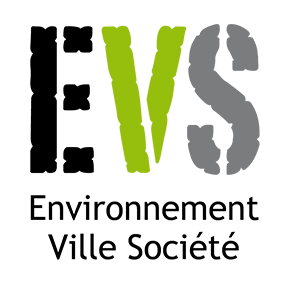
EXPLORE

Vertical Urbanism
Urban Morphology / Typology
Architecture and Urban Geography
Urban Practices
Lifestyles
Sustainability
Experiences and Perceptions
Urban Equity
Spatial Justice
Inclusiveness
Accessibility
Urban Processes
City and Legislation
Urban Governance
Real Estate Market
Public and Private Space
Architecture
Mapping / Cityscapes
Models
Methodologies and Indeces
condoism, highrises, living vertical, urbanizaton, verticalization, volumetric urbanism
Definition:
Density, complexity, and verticality are three keywords to describe the characteristics of Vertical Urbanism. Density means the concentration of population, built area, and the intensity of social interaction. Complexity refers to the multiple and interconnected urban systems that form the backbone of the operation of a contemporary metropolis. Verticality indicates the multi-dimensional spatial network responding to such density and complexity to provide urban environment that is efficient, sustainable, and socially engaging. (ZHONGJIE LIN, p.124-125).
Vertical Urbanism as an alternative approach to the design of the compact city. This concept responds proactively to the state of contemporary metropolises characterized by the relationships of density, complexity, and verticality. It is concerned with physically complex and socially engaged spatial forms featuring the contemporary city as a multilayered and multidimensioned organism. Vertical Urbanism thus distinguishes itself from the nostalgic idea of New Urbanism on the one hand and Modernist notions promoting tall buildings as a dominant urban typology on the other. We have continued to frame the methodology of Vertical Urbanism in the context of a series of capstone urban design studios, using them as laboratories to investigate the design, ecological, and sociocultural dimensions of building the compact city. (ZHONGJIE LIN & GAMÉZ,JOSÉ p.28)
Vertical Urbanism particularly addresses design issues of high-density urban areas supported by complex urban systems that conventional planning approaches are only able to manage with limited success. When urban density reaches a certain point, verticality becomes a crucial attribute of the city. In such a city, all components of urban design including circulation, land uses, open spaces, ecologies, and human activities are distributed in a different pattern and their relationships mutate.(ZHONGJIE LIN & GAMÉZ,JOSÉ p.5)
Finally, it is critical to differentiate the concept of “Vertical Urbanism” from the stereotype of vertical city. Skyscrapers dominate urban centers or central business districts in many cities of the world. They are, however, vertical cities planned and built in the traditional manner and often characterized by the layout of “towers in the park” influenced by Le Corbusier’s theory of urban planning. 12 This approach to planning has led to development patterns like superblocks and gated communities that segregate buildings from their context and result in disconnected urban landscapes. Chinese cities, among others, have seen significant negative consequences of this approach.
In contrast, Vertical Urbanism is not a static form; rather, it represents a dynamic and adaptable strategy of urban design and development. This strategy moves away from the Modernist notion promoting tall buildings as dominant urban typology and toward the exploration of physically interactive and socially engaged forms, which address the city as a multilayered and multidimensioned organism. It is informed by contemporary urban systems ranging from underground mass transit to futuristic urban farms, and conceptualizes the city as a holistic organization of infrastructure, space, and ecology in a three-dimensional framework. Density, complexity, and verticality are three keywords to describe the characteristics of Vertical Urbanism. (ZHONGJIE LIN & GAMÉZ,JOSÉ p.11)
Context:
Vertical Urbanism is not a new idea. Architects and planners have been dreaming of urban forms to address increasing density since more than a century ago. The illustrations of future New York by Richard Rummell and other artists in the 1900s and 1910s envisaged a multilayer city of skyscrapers connected by interconnected bridges and serviced by automobile and rail transportation networks on different levels above and underground.9 These early-20th-century visions of the city as a machine have by now fallen out of favor, but the question remains relevant: can we design urban environment of high intensity which is efficient, sustainable, and livable, with the amenity, landscape, and life style that we enjoy on the ground? The imperative and imminence have only been heightened as cities have become larger and contemporary urban systems more sophisticated. (ZHONGJIE LIN & GAMÉZ,JOSÉ p.123-124)
Comments:
Hayano Yasuke - The pursuit of height is indicative of the worship of power and capital. Only if cities around the world free themselves from the competition for height and the mania for technology, and treat people as the main object of concern, while caring about humanity and nature, can a new and humanistic urban civilization be remodeled.
During the rapid urbanization process that has taken place in the last decade, many of the large-sclae and high-profile construction projects in China’s biggest cities have been assigned to foreign architects. And some of the results have been dreadful. Modernization has been misinterpreted as synonymous with “progress”, and Western architectural authorities have re-colonized China through architectural exports. In modern China, little has been done to maintain the harmonious relationship between the city’s spirit and nature, or to succeed in remodeling a humanistic lifestyle.
The challenge of imagining a future city should be a discussion about spirit and ethics, rather than a debate over technology. The spirit and culture embodied in architecture are what render it truly ageless. Ideas of “greening” are construed from a technological, social and economic angle, rather than from a cultural standpoint.
Although large-scale urban systems are characteristic of megacities across the globe, their impact on urban form must be analyzed within local economic and cultural contexts. (ZHONGJIE LIN & GAMÉZ,JOSÉ p.13)
Equivalent:
compact city
Density, complexity, and verticality
Sub-topics:
condoism, highrises, living vertical, urbanization, verticalization, volumetric urbanism
Bibliography:
Vertical Urbanism: Designing Compact Cities In China. 2018. Editado por Zhongjie Lin e José L. S. Gámez
Rethinking Skyscrapers in China and Elsewhere. in Towards Sustainable Vertical Urbanism.3389-towards-sustainable-vertical-urbanism.pdf (ctbuh.org)
Support:







Support:






